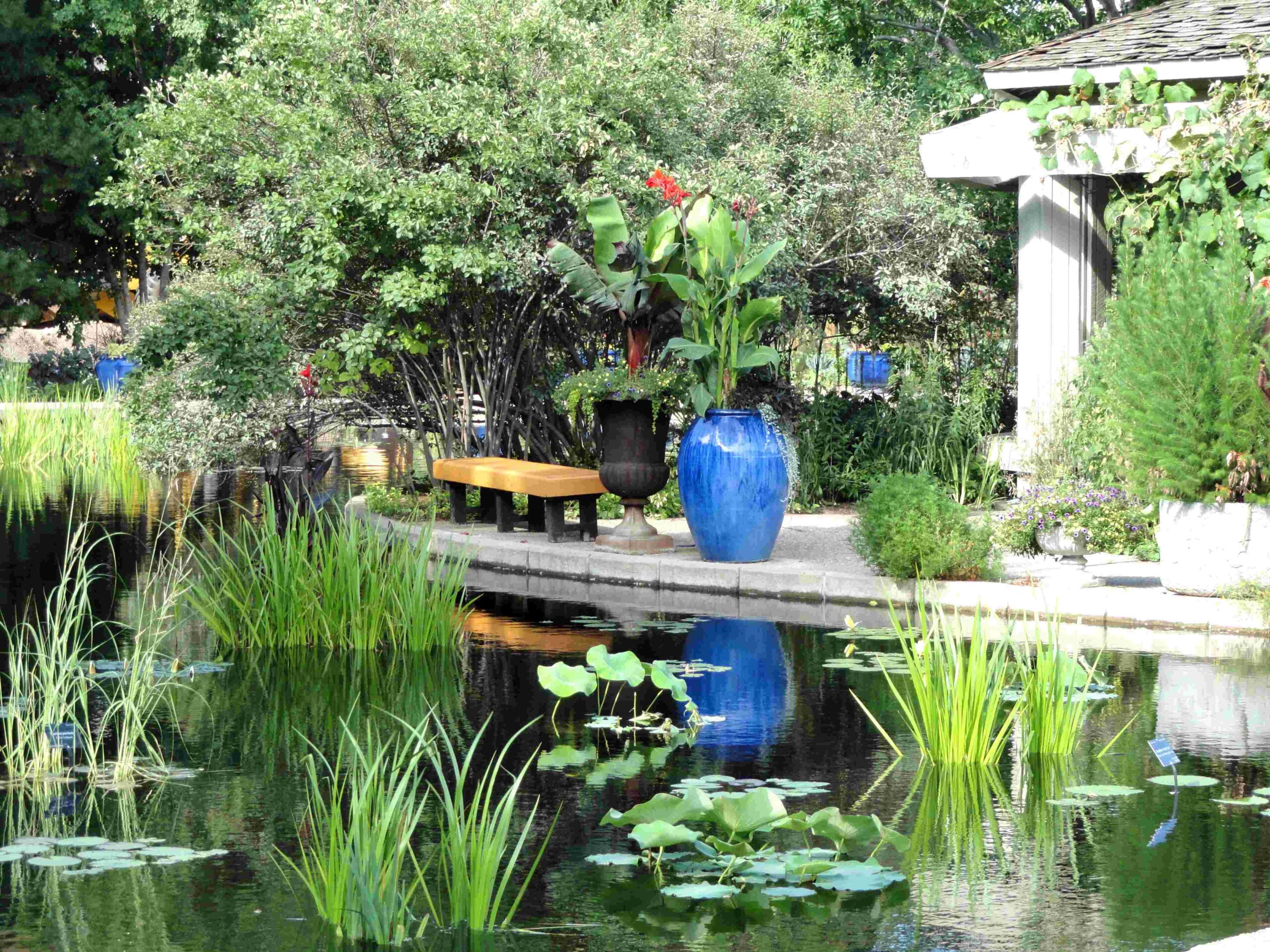The Denver Botanic Gardens has been a hub for stunning glass art exhibitions, showcasing the intricate beauty of glass sculptures amidst lush botanical settings. While not a permanent fixture, the gardens have hosted remarkable glass art installations, most notably the Dale Chihuly exhibition in 2014. This fusion of delicate glass creations with the natural world creates a unique and mesmerizing experience for visitors, highlighting the gardens’ commitment to blending art and nature.
What Makes Glass Art at Denver Botanic Gardens Unique?

Glass art at the Denver Botanic Gardens offers a distinctive experience that sets it apart from traditional art galleries. The interplay between the fragile, translucent glass sculptures and the vibrant, living backdrop of the gardens creates a dynamic and ever-changing display. This unique combination allows visitors to appreciate both the artistry of the glass and the beauty of nature in a single, immersive experience.
Key features that make glass art at Denver Botanic Gardens unique include:
- Outdoor settings that provide natural lighting and changing perspectives throughout the day
- Seasonal changes in the surrounding flora that alter the context of the glass art
- The juxtaposition of man-made glass forms against organic plant shapes
- Large-scale installations that interact with the landscape
What Was the Impact of the Dale Chihuly Exhibition?

The Dale Chihuly exhibition at Denver Botanic Gardens in 2014 was a landmark event that left a lasting impression on both the local community and the art world. This exhibition, which ran from June 14 to November 30, 2014, featured Chihuly’s iconic glass sculptures throughout the gardens.
Some notable impacts of the exhibition include:
- Increased visitor numbers to the gardens
- Enhanced public awareness of glass art as a medium
- Inspiration for local artists and art students
- Boost to Denver’s cultural reputation
- Creation of memorable experiences for visitors of all ages
The exhibition showcased Chihuly’s signature style, with large-scale installations that complemented and contrasted with the natural environment. While specific details about individual pieces are limited in the available sources, Chihuly’s work typically includes vibrant colors, organic forms, and ambitious architectural designs.
How Does Glass Art Integrate with the Botanical Environment?
The integration of glass art within the Denver Botanic Gardens creates a symbiotic relationship between the sculptures and their surroundings. This harmonious blend offers visitors a unique perspective on both the art and the botanical specimens.
Ways in which glass art integrates with the environment:
- Color complementation: Glass artists often choose colors that either harmonize with or provide striking contrasts to the surrounding plants.
- Form mimicry: Some glass sculptures may echo the shapes of nearby flora, creating a visual dialogue between art and nature.
- Light interaction: The translucent quality of glass allows for fascinating interplays with natural light, changing the appearance of both the art and its surroundings throughout the day.
- Scale variation: Artists may create pieces that range from small, delicate forms to large, statement installations, each interacting differently with the garden space.
What Types of Glass Art Have Been Featured at Denver Botanic Gardens?
While the Dale Chihuly exhibition is the most well-known glass art event at the Denver Botanic Gardens, various types of glass art have been featured over the years. Although specific details about other exhibitions are not provided in the current sources, glass art at botanical gardens typically includes:
| Type of Glass Art | Description | Common Locations |
|---|---|---|
| Blown Glass Sculptures | Free-standing or suspended forms created through glassblowing techniques | Throughout gardens, water features |
| Fused Glass Panels | Flat or slightly curved glass pieces created by fusing multiple glass elements | Walls, fences, trellises |
| Cast Glass | Solid glass forms made by pouring molten glass into molds | Ground installations, pedestals |
| Lampworked Glass | Intricate, small-scale glass works created using a torch | Enclosed display cases, indoor galleries |
| Stained Glass | Colored glass pieces arranged to form images or patterns | Windows, conservatory structures |
Are There Permanent Glass Art Installations at Denver Botanic Gardens?
Based on the available information, there are no permanent glass art installations specifically mentioned at the Denver Botanic Gardens. The gardens primarily host temporary exhibitions and rotating displays of various art forms, including glass art. However, the gardens do maintain a diverse art collection, which may include some glass pieces.
To find current information about any permanent or temporary glass art installations, visitors should:
- Check the official Denver Botanic Gardens website for updates on exhibitions
- Contact the gardens directly for inquiries about specific art pieces
- Visit the gardens in person to explore the current art displays
- Follow the gardens’ social media accounts for announcements about new art installations
How Can Visitors Best Experience Glass Art at Denver Botanic Gardens?
To fully appreciate glass art at the Denver Botanic Gardens, visitors should consider the following tips:
- Time of Day: Visit at different times to see how changing light affects the glass art.
- Seasonal Visits: Experience the interplay between glass art and seasonal flora changes.
- Guided Tours: Participate in guided tours when available for expert insights.
- Photography: Capture the art from various angles, respecting any photography guidelines.
- Reflection: Take time to observe how the glass art reflects and refracts light and surroundings.
- Context: Read about the artists and their inspirations to deepen your understanding.
- Interaction: Observe how other visitors interact with and respond to the art.
What Are the Accessibility Options for Viewing Glass Art at Denver Botanic Gardens?
The Denver Botanic Gardens strives to make art exhibitions, including glass art, accessible to all visitors. While specific accessibility information for glass art exhibits is not provided, the general accessibility features of the gardens apply:
- Wheelchair and stroller accessible pathways throughout most of the gardens
- Accessible parking spaces in the parking garage and nearby lots
- Elevators in multi-level buildings
- Accessible restrooms
- Availability of wheelchairs for loan (subject to availability)
Visitors with specific accessibility needs should contact the gardens in advance to ensure the best possible experience when viewing glass art installations.
How Does Denver Botanic Gardens Support Glass Artists?
While there is no specific information provided about support for glass artists, the Denver Botanic Gardens generally supports artists through:
- Hosting temporary exhibitions
- Providing unique spaces for art installations
- Offering educational programs and workshops (though specific glass art workshops are not mentioned)
- Collaborating with local and international artists
The gardens’ commitment to integrating art with nature suggests that they may offer opportunities for glass artists to showcase their work in this unique setting. However, for the most current information on artist support and potential glass art initiatives, interested parties should contact the Denver Botanic Gardens directly.
What Future Glass Art Exhibitions Are Planned at Denver Botanic Gardens?
As of the available information, there are no specific future glass art exhibitions announced for the Denver Botanic Gardens. The gardens’ exhibition schedule focuses on various art forms and mediums, but glass art is not explicitly mentioned in upcoming events.
To stay informed about potential future glass art exhibitions:
- Regularly check the official Denver Botanic Gardens website
- Subscribe to the gardens’ newsletter
- Follow their social media accounts for announcements
- Contact the gardens directly for inquiries about upcoming art exhibitions
While glass art may not be a constant presence, the Denver Botanic Gardens’ history of hosting significant exhibitions like the Dale Chihuly show suggests that future glass art events remain a possibility.

